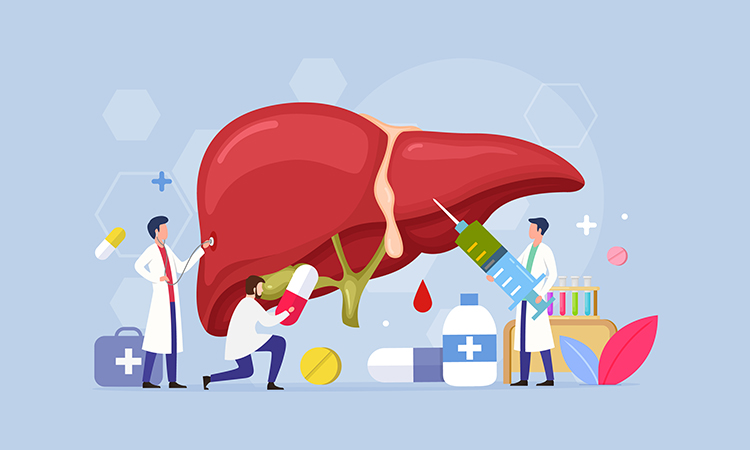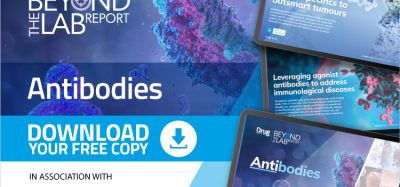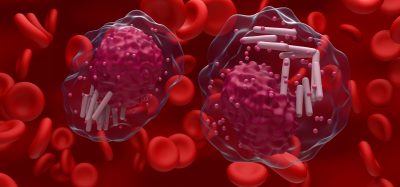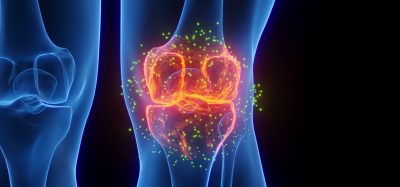New approach to treating liver cancer
Posted: 20 March 2023 | Izzy Wood (Drug Target Review) | No comments yet
Results from a US study in cells and mice may have implications for the development of a new class of anticancer drugs against liver cancer.


Scientists at the National Institutes of Health (NIH) and Massachusetts General Hospital (MGH), US, have uncovered a potential new approach against liver cancer that could lead to the development of a new class of anticancer drugs.
In a series of experiments in cells and mice, published in Nature Cancer, researchers found that an enzyme produced in liver cancer cells could convert a group of compounds into anticancer drugs, killing cells and reducing disease in animals. This enzyme could become a potential target for the development of new drugs against liver cancers, and perhaps other cancers and diseases as well.
“It emerged from a screening to find molecules that selectively kill human liver cancer cells. It took a lot of work to figure out that the molecule is converted by an enzyme in these liver cancer cells, creating a toxic, anticancer drug.” said Dr Matthew Hall, one of the leaders of the work at NIH’s National Centre for Advancing Translational Sciences (NCATS).
The cancer is characterised by mutations in the IDH1 enzyme. The team wanted to find compounds and drugs that might be effective against the IDH1 mutation. They rapidly tested thousands of approved drugs and experimental cancer agents for their effectiveness in killing cholangiocarcinoma cells, with IDH1 as a target.
They found several molecules, including one called YC-1, could kill the cancer cells. Yet, when they looked to see how YC-1 was working, they discovered the compound wasn’t affecting the IDH1 mutation.
It was shown that the liver cancer cells made an enzyme, SULT1A1. The enzyme activated the YC-1 compound, making it toxic to tumour cells in cancer cell cultures and mouse models of liver cancers. In the animal models treated with YC-1, the liver tumours either had reduced growth or shrank. Conversely, the researchers found no changes in tumours treated with YC-1 in animals with cancer cells lacking the enzyme.
The researchers examined other databases of drug screening results in compound and drug libraries to match drug activity with SULT1A1 activity. They identified several classes of compounds that relied on SULT1A1 for their tumour-killing activity. Using computational methods, they predicted other compounds that also likely were dependent on SULT1A1.
“Once we found SULT1A1 activated YC-1, it led us to ask, ‘What other compounds are active and can kill cells by the same mechanism?’ Hall explained. “Can we identify other compounds that were being developed and demonstrate that they were also active because of SULT1A1 activation? The answer was yes. We found other compounds with the same mechanism of action as YC-1.”
The researchers saw YC-1 and similar molecules as prototypes for developing compounds that could be effective against important proteins on cells. Modifying different parts of these molecules could make them more specific for such proteins. The researchers point to the creation of a “toolkit of SULT1A1-activated molecules” that could affect many different targets.
Such a toolkit is comprised of hundreds of known molecules. In theory, the toolkit covers many types of enzymes, called sulfotransferases, that are active in different tissues in the body. For example, in addition to SULT1A1, the human sulfotransferase SULT4A1 is active in the brain. It can activate a subset of the molecules in the toolkit. This might be useful in developing drugs specific for brain cancers.
Related topics
Enzymes, Oncology, Targets, Therapeutics
Related conditions
Liver cancer
Related organisations
Massachusetts General Hospital (MGH), National Centre for Advancing Translational Sciences (NCATS), National Institutes of Health (NIH)
Related people
Dr Matthew Hall








